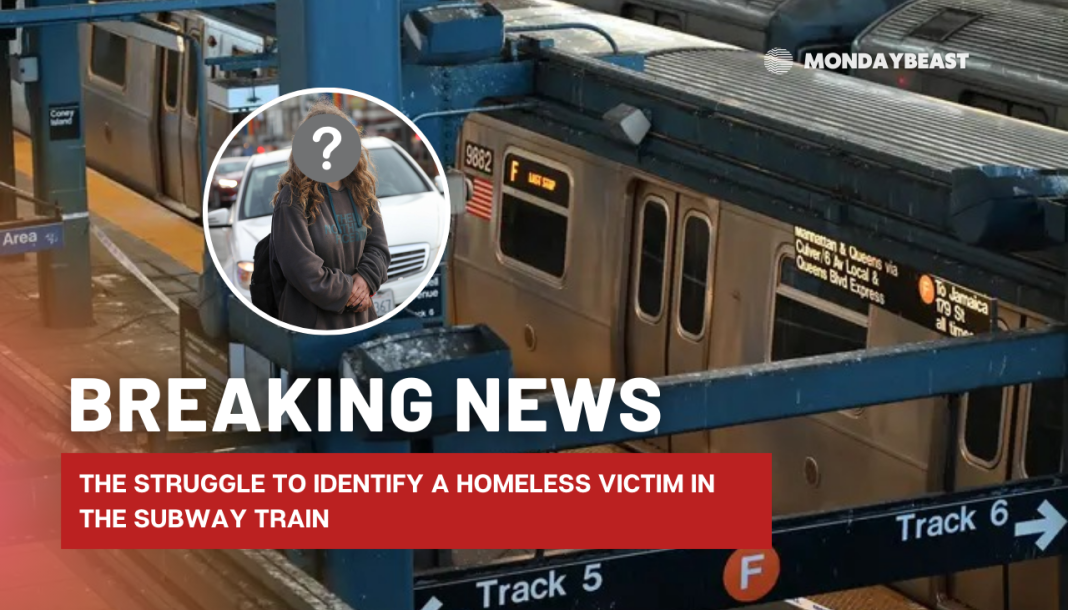The tragedy of the subway attack lingers in the air. A woman’s life was snuffed out on a seemingly mundane F train. It raises unsettling questions for many: how are we identifying the victims of such horrific acts? The recent incident at Coney Island has impacted not just the community, but it reverberates across the bustling city of New York.
Identity seems a distant memory when involved in a deadly crime. The woman who perished in flames had no known name, no documents to help guide investigators. How heartbreaking it is to think she was known to no one, to fall through the cracks of society. We often hear stories of the homeless but seldom pause to humanize their plight.

David Giffen, a voice for vulnerable populations, highlighted the depth of this tragedy. “At this point, we still don’t even know who she was, and she can’t be mourned.” It’s a striking reminder of how someone’s life can fade into oblivion without a trace. To many, she was just another face in the crowd of the subway system, a fleeting moment in the city’s rush.
And yet, this was a life lost, a life that mattered. The medical examiner’s office has been tirelessly working but faced a daunting task. Investigators rely heavily on dental records or DNA. It’s not a straightforward process, given the circumstances. How much longer will it take before this woman is named and remembered?
Burns and trauma complicate identification, making it nearly impossible to rely on traditional means. The authorities find themselves in a relentless search for answers. Each day stretches on, and with it, the pain of lost identity grows heavier. Joseph Giacalone’s insights bring a reality check.

“Burns can make simple methods of identification—using facial features or fingerprints—difficult or impossible,” he notes. It’s sobering to consider how close we stand to anonymity amid violence.
The homeless often carry nothing to aid in identification. No wallets, no identification cards. It’s a haunting reminder of their existence. As the lines between identity and invisibility blur, we ask ourselves: How can we begin to break down these barriers?
Even as authorities investigate, the road ahead remains rocky. People may have encountered the woman without ever knowing her name. Many homeless individuals are transient. A web of interconnected lives unfolds, yet unraveling that web is no small feat.

This tragedy also amplifies broader conversations. Those who live on the streets often become victims of circumstances we can hardly comprehend. Negative interactions with authorities create barriers to support. “Finding people in the homeless community who might have known her would be difficult,” Giacalone explains.
Perhaps it’s the emotional distance that perpetuates this cycle of neglect. Each person impacted by this tragedy adds another layer to an already complex issue. When we talk about safety in public spaces, are we also considering the safety of those most vulnerable?
The alleged attacker, Sebastian Zapeta-Calil, awaits trial, expected to plead not guilty. But that doesn’t erase the haunting image of a woman forced to endure such a terrifying act. What thoughts might have raced through her mind as flames engulfed her? Was she alone in the world?
The fear this incident incited among New Yorkers cannot be overstated. Subway systems, often viewed as veins of connectivity, now seem riddled with dangers. Each ride could spark anxiety. Enhanced security measures may follow, alongside deeper reflections on mental health and homelessness in the city.
As the memory of this woman fades further into obscurity, we have to do more than just remember her. Let’s consider the systems at play. What larger conversations about empathy and humanity arise when someone loses their life in such a grotesque manner? Are we merely spectators? Or can we step forward and change the narrative?
Giffen reminds us poignantly of our humanity. “It’s OK to ask somebody their name.” Stripping down barriers begins with personal interactions. With every name we share, we affirm the validity of lives that matter, regardless of circumstance.
In times of sorrow, we must not forget our shared humanity. When tragedy strikes, how can we extend our compassion to others? The New York subway system may be vast, yet the connections between us remain. This woman, now a tragedy, must inspire us to change.
The questions now remain: will we act? One lost life among millions should be a catalyst for change. To ensure that no one else falls into anonymity, it takes effort from all of us. Let’s embrace the call to remember, to acknowledge, and to act.




